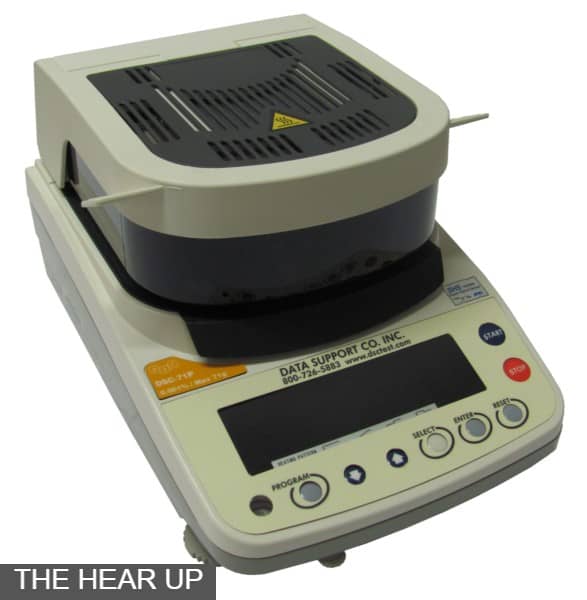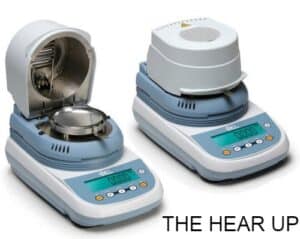Latest News
Moisture analyzer for plastic

Moisture analyzer for plastic
In plastics, the water content is an important parameter, so an accurate measurement is essential to guarantee the manufacturing and processing quality of these materials. Moisture affects the productivity of almost all plastics, especially hygroscopic equivalents such as nylon (polyamide) and polychlorinated terephthalate (PBAT).
However, when these plastics are formed or processed at unacceptable humidity levels, structural or visual defects occur, which is a major problem. Another equally important factor is a deep understanding of the water content because wet casting degrades the performance of certain degradable polymers and materials. There are many acceptable methods for determining the water content in plastics, but most traditional techniques have their own shortcomings, of which precision and speed are the main problems.
Issues with Measuring Plastic Moisture Content
Traditionally, the plastics’ moisture content has been established through Karl Fischer titration (ASTM D 6869) or through methods using vacuum and heat to remove moisture until a constant weight is achieved. Conversely, these techniques are not only time-intensive but also depend heavily on the thermal stability and the equilibrium water content of the polymer. This means it is important to make sure that all the moisture present in the raw material is detected and extracted effectively and that any other products that may emerge from the plastic are not confused with the water while the polymer is being heated.
Most often, the water content of about 1%–2% by weight can be safely determined through a vacuum oven at temperatures where the rate of evaporation is adequately high yet lower than the polymer’s decomposition temperature. This process is mostly carried out when testing for drying conditions prior to injection molding. Sometimes, broad line NMR can be used for establishing water fraction but this method has to be calibrated. The same holds true for NIR or IR results acquired from plastic films.
Nylon Moisture Problems
As an example of the issues associated with polymer molding, the ability and the tendency of nylon to absorb moisture represent a constant challenge. In the case of nylon, moisture can impact an array of polymer properties, which consecutively affect dimensional stability, processability, acoustic, mechanical, chemical, electrical, and optical properties, and eventually the performance of the product. In nylon, moisture behaves as a plasticizer in order to decrease the bonding and entanglement between molecules and thus boost their mobility and volume.
Nylon contaminated with moisture has a lower glass transition temperature (Tg), which makes it easier for extra crystallization to take place. In this manner, the increased moisture content can cause extreme variations in material behavior under load; for instance, it can increase ductility and reduce stiffness and strength. In due course, this introduces changes in the material’s properties and will potentially result in substandard products.

Plastic Manufacture
Currently, during the production of plastic and polymer parts, precision components that have to be defect-free and of high quality are molded. Prior to each manufacturing run, plastic manufacturers carefully dry pellets, which means they have to check moisture content intermittently until acceptable levels are achieved. Therefore, long moisture test times are major issues because they lead to a costly and extended time in the pellet dryer.
Infrared moisture balances are rapid techniques that can be used for determining moisture, although it can take 20 minutes or more to complete the process. It is also possible to fit dedicated optical sensors to pellet dryers, but these are highly specialized, costly, and need constant calibration. The SMART Q presents a novel option for determining moisture levels. This method can offer fast on-line testing along with a direct loss on drying, and since it is a primary technique, calibration is not needed. It is also easy to use; insensitive to density, color, or compound changes; and has the ability to withstand adverse manufacturing environments.
DSC 71P™ Low Moisture Analyzer employs a combination of proprietary and patented technologies to offer repeatable results and controlled heating in approximately five minutes without any need to preheat the cavity. The alternative method will take 5 to 8 hours utilizing direct oven tech DSC 71P™
moisture analyzer enables direct moisture analysis and hence does not require calibration, unlike other spectroscopic techniques.
Compared to other direct competitors, the SMART Q moisture analyzer is faster and offers better accuracy and precision. It can quickly examine a host of plastics for moisture with an average difference of below 0.003% when compared to the air-oven technique. A recent study on the DSC 71P™ inspected five entirely different types of plastic such as nylon, rubber, ABS, polypropylene, and polycarbonate. The results revealed a close correlation with oven-achieved moisture content results, but in a fraction of the time, that is, 5 minutes instead of the usual 5 to 8 hours.
Sebastian was born and raised in the busy city of Abbottabad. As a journalist, Saad Mushtaq has contributed to many online publications including the PAK Today and the Huffing Post. In regards to academics, Saad Mushtaq earned a degree in business from the Abbottabad UST, Havelian. Saad Mushtaq follows the money and covers all aspects of emerging tech here at The Hear Up.Thanks










